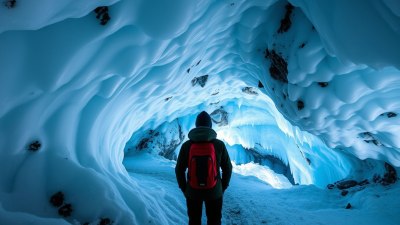What to Pack When Traveling to Extreme Climates
Essential packing tips for traveling in extreme climates to ensure comfort and safety.

Traveling to extreme climates can be an exhilarating experience, but it requires careful preparation and packing. Whether you're heading to the blistering heat of the desert, the frigid temperatures of the Arctic, or anywhere in between, the right gear can make all the difference in your comfort and safety.
Each extreme climate presents its own challenges and requires specific items to ensure an enjoyable experience. Here’s a comprehensive guide on what to pack for extreme climates, focusing on essential gear, clothing, safety items, and more.
Understanding Extreme Climates
Extreme climates can broadly be categorized into hot and cold extremes. Hot climates, such as deserts, rainforests, or savannas, are characterized by high temperatures and often severe sun exposure. Cold climates, such as polar regions, mountainous areas, or high altitudes, have low temperatures, strong winds, and the potential for snow and ice. Understanding the unique challenges of each type of climate is the first step in effective packing.
Packing for Hot Climates
When visiting hot climates, your packing list should prioritize lightweight, breathable clothing, sun protection, and adequate hydration supplies. Here’s a detailed list of what to consider:
Clothing
1. Lightweight, breathable fabrics such as cotton and linen are crucial. They help wick moisture and keep you cool.
2. Long-sleeved shirts and long pants provide sun protection while still being lightweight.
3. A wide-brimmed sun hat is essential for shielding your face and neck from harmful UV rays.
4. Sunglasses with UV protection will help safeguard your eyes from glare and sun damage.
Footwear
1. Lightweight and breathable footwear such as sandals or hiking shoes are ideal for hot terrains.
2. Ensure your shoes have good traction if you plan on hiking or exploring rugged environments.
Sun Protection
1. Sunscreen with a high SPF is a must-have to protect your skin from sunburn.
2. Lip balm with sunblock can help prevent chapped lips caused by sun exposure.
Hydration
1. A reusable water bottle or hydration pack is essential for staying hydrated.
2. Electrolyte powders or tablets can replenish lost salts and minerals when sweating profusely.
Emergency Supplies
1. A small first aid kit should include band-aids, antiseptic wipes, and any personal medications.
2. A flashlight or headlamp can be useful for exploring after dark.
Packing for Cold Climates
In cold climates, your packing strategy should focus on insulation, moisture-wicking materials, and gear to combat cold and wind. Here’s a packing list:
Clothing
1. Layering is key. Start with a moisture-wicking base layer to keep sweat off your skin.
2. An insulating layer such as fleece or down is essential to trap heat.
3. The outer layer should be waterproof and windproof, ideally a breathable jacket or parka.
4. Thermal leggings or long underwear can add an extra layer of warmth.
Footwear
1. Insulated, waterproof boots are crucial for keeping your feet warm and dry.
2. Thick thermal socks will provide much-needed insulation.
3. Gaiters can keep snow and moisture from entering your boots.
Accessories
1. A warm hat that covers your ears is vital for heat retention.
2. Gloves or mittens should be insulated and waterproof if possible.
3. A neck gaiter or scarf can help protect your neck and face from the cold.
Emergency Supplies
1. A compact shovel is useful for digging out snow or creating emergency shelter.
2. An emergency blanket or bivvy bag can provide crucial warmth in dire situations.
General Tips for Packing
Regardless of the climate, there are best practices for packing effectively.
1. Check the weather forecast for your destination before packing.
2. Roll your clothes instead of folding them to save space and reduce wrinkles.
3. Use packing cubes or compression bags to organize items and maximize space in your luggage.
4. Don’t forget electronics chargers and portable power banks for your devices.
Research and Resources
Understanding the environment you're entering is just as important as your packing. Research the specific region's weather patterns, seasonal considerations, and terrain to tailor your packing effectively. Consider resources like travel blogs, forums, or guides that specialize in the area you're visiting.
Safety Considerations
Be aware of the unique dangers present in extreme climates. In hot climates, be attentive to signs of heat exhaustion or dehydration. In cold climates, monitor for symptoms of frostbite or hypothermia. Carry a map, compass, or GPS device, especially when exploring remote areas, as getting lost can be life-threatening in uncharted territories.
Final Thoughts
Traveling to extreme climates offers unique experiences that can be both thrilling and challenging. Proper packing can significantly enhance your adventure and ensure that you remain comfortable and safe throughout your journey. Always prepare for unexpected weather changes and adjust your gear accordingly. Embrace the adventure, and enjoy the beauty of nature in its most extreme forms.











